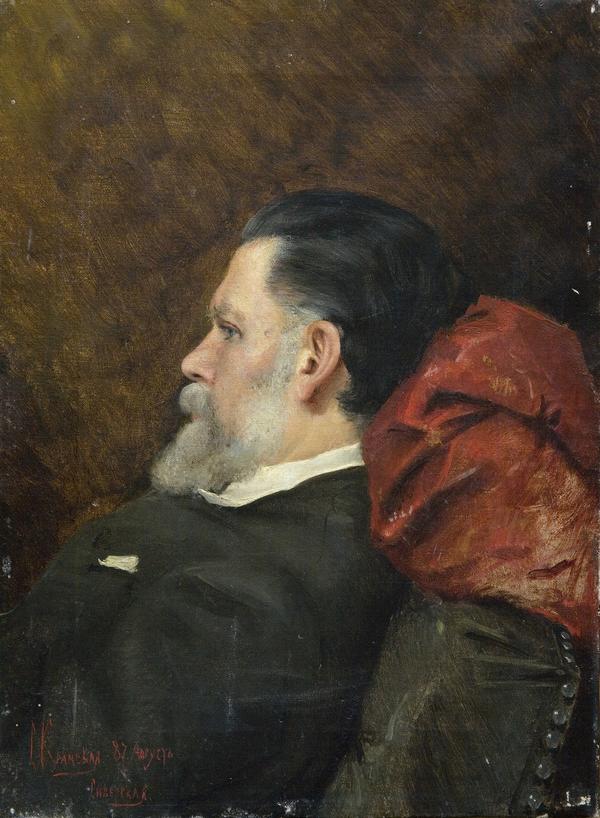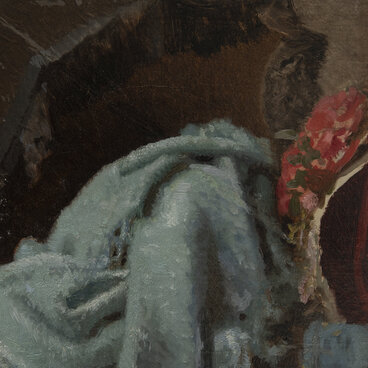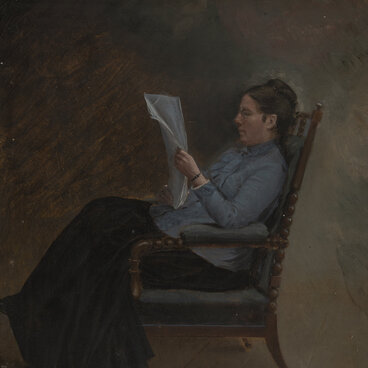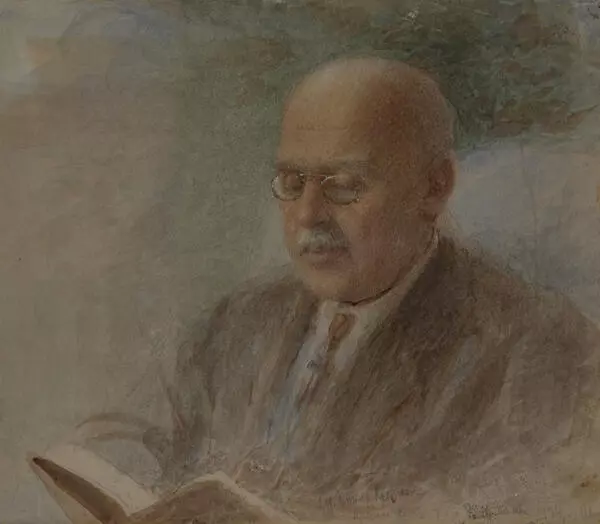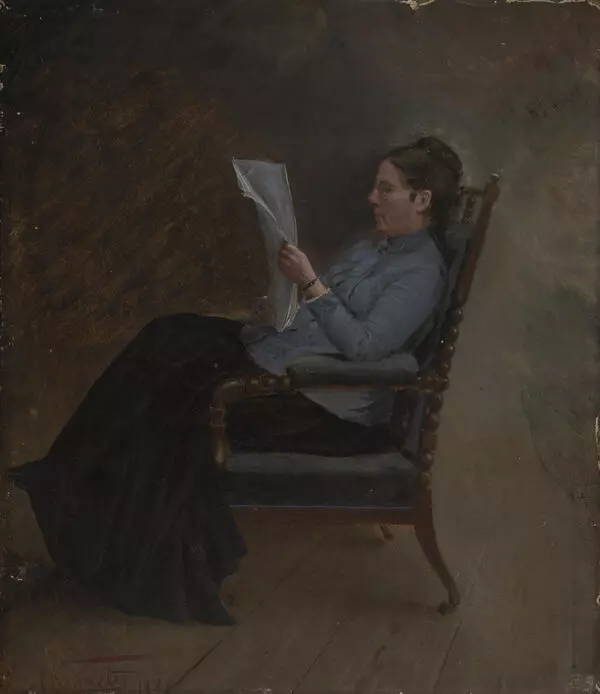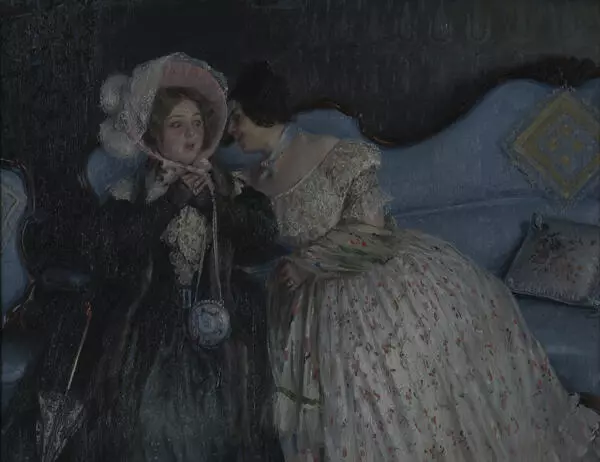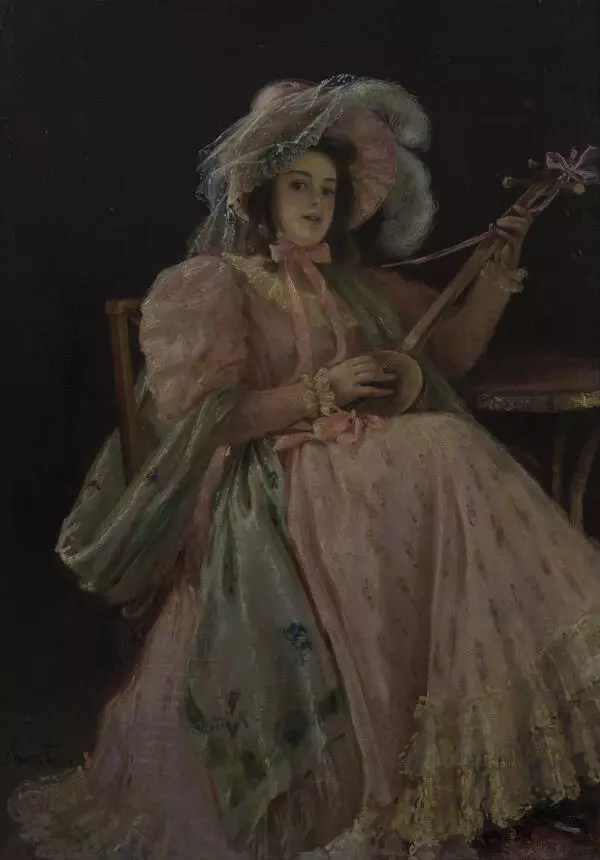The exhibition of the Ostrogozhsk Museum of History and Art features one of the first prominent works by Sophia Ivanovna Junker-Kramskaya — the “Portrait of Ivan Nikolaevich Kramskoy”.
Sophia Junker-Kramskaya was the daughter of Ivan Kramskoy. She was born on August 21 (September 2), 1867 in the Vypolzovo village, Pereslavsky Uyezd, Vladimir Governorate, at the estate of Ivan Kramskoy’s friend and fellow countryman Mikhail Tulinov where Kramskoy and his family were spending the summer. Sophia Kramskaya graduated from the girl’s high school and after that studied painting with her father for two years. “There is profound truth and depth, ” Ivan Kramskoy said about his daughter’s paintings. After the death of her father, Sophia Kramskaya studied painting under Alexander Litovchenko, took lessons in watercolor painting with Alexander Sokolov, and engaged in a creative dialogue with Arkhip Kuindzhi. In the early 1890s, the artist went to Europe and attended a private painting school in Paris where the sculptor Mark Antokolsky took her under his wing. Sophia Kramskaya participated in numerous exhibitions both in Russia and abroad. During that period, she created one of her best paintings — “The Sleeping Woman”.
The “Portrait of Ivan Nikolaevich Kramskoy” was painted in 1887, the year the artist died. Like her father, Sophia Kramskaya had a penchant for portraits. This vivid portrait of Ivan Kramskoy was one of her earliest works and made her famous. Ivan Nikolaevich is depicted sitting in an armchair and reclining his gray-haired head on the pillow. He is tired and pensive. In this portrait, Kramskoy looks like an old man although he is not even fifty.
Until the Revolution of 1917, Sophia Kramskaya received a lot of commissions. According to the catalogs of exhibitions, she painted a series of portraits depicting representatives of high society. Particularly prominent are the watercolor portraits of the Emperor, Empress, Tsesarevich, and Grand Duchesses.
After the October Revolution, Sophia Kramskaya worked at the Art Reproduction Workshop of the “Glavnauka” Publishing House (1918–1930), was the artist at the Museum of Anthropology and Ethnography of the Academy of Sciences (1925–1930), participated in organizing the Anti-Religious Museum at the Winter Palace, and illustrated “The History of Religions” for the “Atheist” Publishing House in Moscow. In the early 1930s, Sophia Kramskaya was arrested “for counter-revolutionary propaganda”. In 1933, the artist died in Leningrad.
Sophia Junker-Kramskaya was the daughter of Ivan Kramskoy. She was born on August 21 (September 2), 1867 in the Vypolzovo village, Pereslavsky Uyezd, Vladimir Governorate, at the estate of Ivan Kramskoy’s friend and fellow countryman Mikhail Tulinov where Kramskoy and his family were spending the summer. Sophia Kramskaya graduated from the girl’s high school and after that studied painting with her father for two years. “There is profound truth and depth, ” Ivan Kramskoy said about his daughter’s paintings. After the death of her father, Sophia Kramskaya studied painting under Alexander Litovchenko, took lessons in watercolor painting with Alexander Sokolov, and engaged in a creative dialogue with Arkhip Kuindzhi. In the early 1890s, the artist went to Europe and attended a private painting school in Paris where the sculptor Mark Antokolsky took her under his wing. Sophia Kramskaya participated in numerous exhibitions both in Russia and abroad. During that period, she created one of her best paintings — “The Sleeping Woman”.
The “Portrait of Ivan Nikolaevich Kramskoy” was painted in 1887, the year the artist died. Like her father, Sophia Kramskaya had a penchant for portraits. This vivid portrait of Ivan Kramskoy was one of her earliest works and made her famous. Ivan Nikolaevich is depicted sitting in an armchair and reclining his gray-haired head on the pillow. He is tired and pensive. In this portrait, Kramskoy looks like an old man although he is not even fifty.
Until the Revolution of 1917, Sophia Kramskaya received a lot of commissions. According to the catalogs of exhibitions, she painted a series of portraits depicting representatives of high society. Particularly prominent are the watercolor portraits of the Emperor, Empress, Tsesarevich, and Grand Duchesses.
After the October Revolution, Sophia Kramskaya worked at the Art Reproduction Workshop of the “Glavnauka” Publishing House (1918–1930), was the artist at the Museum of Anthropology and Ethnography of the Academy of Sciences (1925–1930), participated in organizing the Anti-Religious Museum at the Winter Palace, and illustrated “The History of Religions” for the “Atheist” Publishing House in Moscow. In the early 1930s, Sophia Kramskaya was arrested “for counter-revolutionary propaganda”. In 1933, the artist died in Leningrad.

